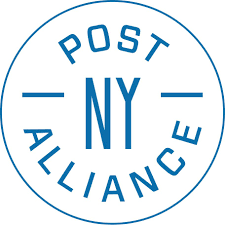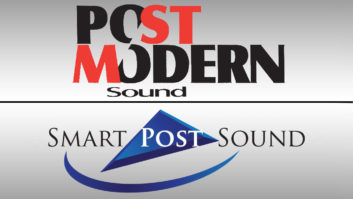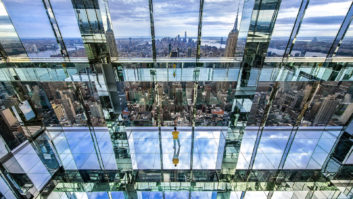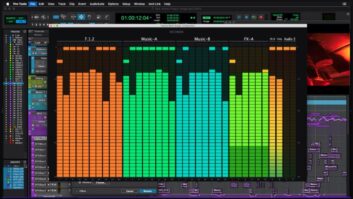 NEW YORK CITY— When New York City began Phase 4 reopening of its economy, it paved the way for the resumption of film and television production under restrictions designed to forestall the spread of coronavirus. Productions must implement testing, apply rigorous cleaning measures and practice social distancing. But the good news is, the city is back in the business of making films and television shows.
NEW YORK CITY— When New York City began Phase 4 reopening of its economy, it paved the way for the resumption of film and television production under restrictions designed to forestall the spread of coronavirus. Productions must implement testing, apply rigorous cleaning measures and practice social distancing. But the good news is, the city is back in the business of making films and television shows.
In fact, a part of the industry never shut down. Companies in the city’s diverse post-production community devised innovative ways to keep working—safely and responsibly—through the lockdown. Post production facilities, sound companies, editors, visual effects houses and others, many members of Post Alliance New York (PNYA), quickly shifted to remote operation when lockdown measures were set in place in March. With many staff working from home, they were able to finish projects that were in progress and take on new work.
“New York was the first to get hit, but also the first to adapt,” says PNYA chair Yana Collins Lehman. “Post-production companies adapted seamlessly and efficiently, and now production is ramping back up. New York today is a very safe place to bring productions and we have a lot of capacity. It’s a great time and a great place to shoot and finish shows.”
PNYA was very busy during the lockdown. It worked with the Governor’s Office, the New York Production Alliance (NYPA) and other industry organizations to help its members cope with the crisis and develop sound reopening strategies. Drawing on OSHA, CDC and state guidelines, members of the organization’s board of directors drew up detailed rules for the resumption of on-site services. Armed with these new guidelines, facilities across the city have begun to bring back staff and clients.

Sim New York, which provides sound and picture finishing, editorial suites and other services, has started a successful transition back to normal operations by implementing new safety protocols. “Everyone who enters our facility registers through Envoy software, which walks them through check-in,” explains Sim New York vice president and PNYA board member Kim Spikes. “When two people are working together in the same room, they wear masks. It’s a little different, but staff and clients have done a great job in doing what is necessary to return to work.”
PNYA also launched a webinar series to disseminate information among its members and promote community spirit. The series has covered topics including remote collaboration, tax policies and emerging technologies and has been so enthusiastically received, that it has been extended indefinitely.
Spikes adds that she and other PNYA board members personally reached out to companies to see how they were coping. “People had tons of questions,” she recalls. “We were able to help them access the information and resources they needed. Not all PNYA members have larger employee footprints , in multiple countries, like SIM, or a corporate structure that can help figure it all out. Many are mom-and-pop companies that faced daunting challenges. PNYA helped them get through it.”
Post-production companies will receive a further boost with the resumption of production. Like PNYA, the New York Production Alliance has coordinated with government officials, healthcare authorities, unions and guilds to develop guidelines to allow producers to begin shooting again. “We surveyed best practices around the world and created a document that rests on our website,” says NYPA chairperson Flo Mitchell-Brown. “We hosted webinars and conducted weekly calls with members of our community to answer their questions and assess where they are at. Now, film and television producers are getting back to work.”
The world producers return to will be different and marked by new challenges as they implement new and often costly protocols, but Mitchell-Brown is confident the industry will bounce back stronger than ever. “This community has faced crises before, from strikes to 9/11, but, in terms of its magnitude and people affected, nothing compares to COVID,” she says. “Still, we are resilient people and we will rally. Our members are committed to the city and they are not going anywhere. The tax credits provided by the state are a big help and we are grateful to have a governor with the courage and foresight to leave the tax program in the budget in these uncertain times.”
If there is a silver lining to the pandemic, it’s that it has brought New York’s already tight-knit production and post-production communities closer together. “There was already a lot of overlap between production and post,” says Lehman. “Post facilities are on sets managing dailies. Visual effects companies work on shows conceptually during pre-production. We’re really one industry and we’re working in unison as never before to help New York get back to business.”
About Post New York Alliance (PNYA)
Post New York Alliance (PNYA) is an association of film and television post production facilities, labor unions and individuals operating in New York. PNYA members coalesced around the belief that a unified industry presents the post production community better opportunities to develop and promote public policy that benefits the film and television industry as a whole. PNYA’s objectives include incentivizing projects to finish in New York, marketing the services provided by the New York post-production industry and creating avenues for talent to enter this fast-growing sector of the economy.







